Dynamic & static-progressive rotation orthoses
Research shows mobilisation/stretching orthoses typical result in gains of 40⁰-50⁰ rotation following wrist or elbow fractures. This is despite therapy plateau, hard end-feel, chronicity. While individual results depend on bony integrity and joint congruence, many studies have demonstrated significant improvements despite severity of injury, stiffness or malunion. The reason for this is that while typical stretching exercises won’t work in cases of significant stiffness, the dose of the stretch is increased significantly by such a splint. For example, a diligent patient may get minutes to one hour a day to stretch. If they apply a splint, they get hours of stretch per day (typically 4-8 hours). This allows lengthening of the soft tissue constraints, meaning long-lasting range of motion improvements.
Orthoses for stiffness
Orthoses for stiffness are tried and tested, and work for many joints. In the case of rotation in either supination or pronation, results are impressive; even for people who aren’t progressing with therapy or where clinical reasoning suggests they are unlikely to improve. We also know that despite “functional range” being considered 100˚ (50˚ supination & 50˚ pronation), gains within and beyond this result in significant improvements in function.
Have a read of these articles to see the impressive results orthoses can achieve for forearm rotation. We find we get similar results with orthoses such as the Colello and One-80˚ Pronosupinator, but have not had such success with the van Lede design (wrist splint + elbow splint with rotation strap). We do not recommend a neoprene wrap orthosis for stiffness, as it never holds a patient at end-of-range and is not designed to treat stiffness. How do your patient outcomes compare?
Lee, M. J., & LaStayo, P. C. (2003). A Supination Splint Worn Distal to the Elbow: A Radiographic, Electromyographic, and Retrospective Report. Journal of Hand Therapy, 16(3), 190-198.
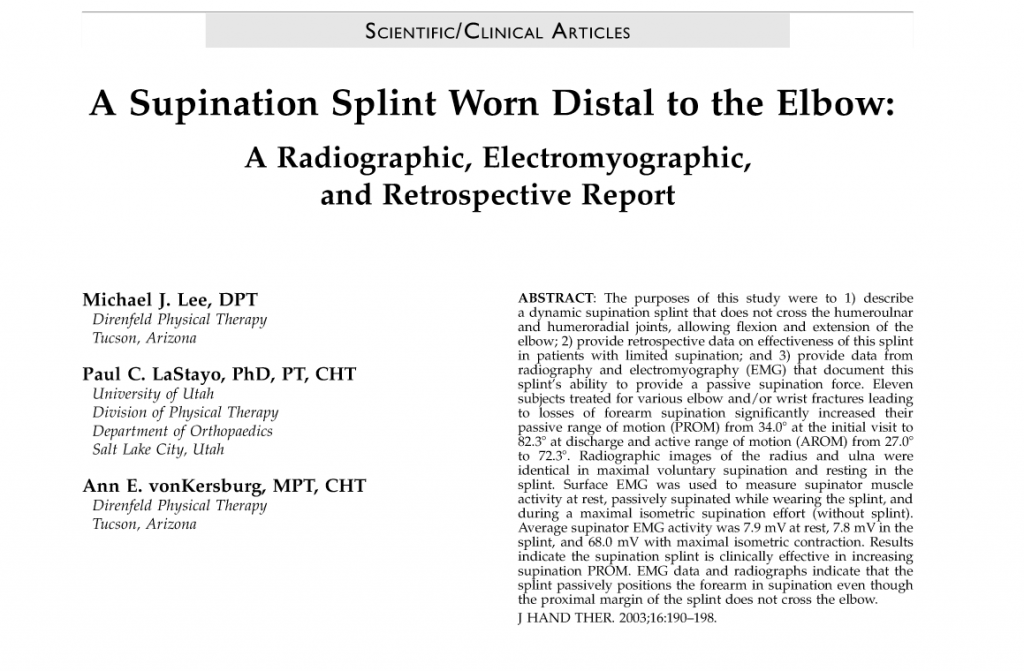
Lucado, A. M., Li, Z., Russell, G. B., Papadonikolakis, A., & Ruch, D.S. (2008). Changes in impairment and function after static progressive splinting for stiffness after distal radius fracture. Journal of Hand Therapy, 21(4), 319-325.
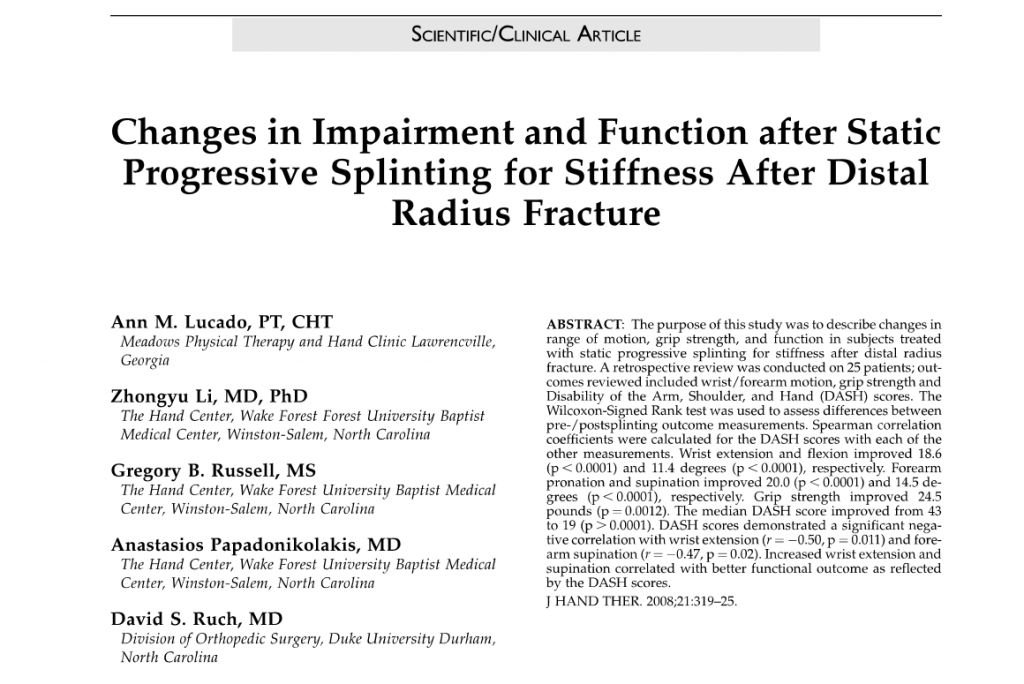
McGrath, M. S., Ulrich, S. D., Bonutti, P. M., Marker, D. R., Johanssen, H. R., & Mont, M. A. (2009). Static progressive splinting for restoration of rotational motion of the forearm. Journal of Hand Therapy, 22(1), 3-9.
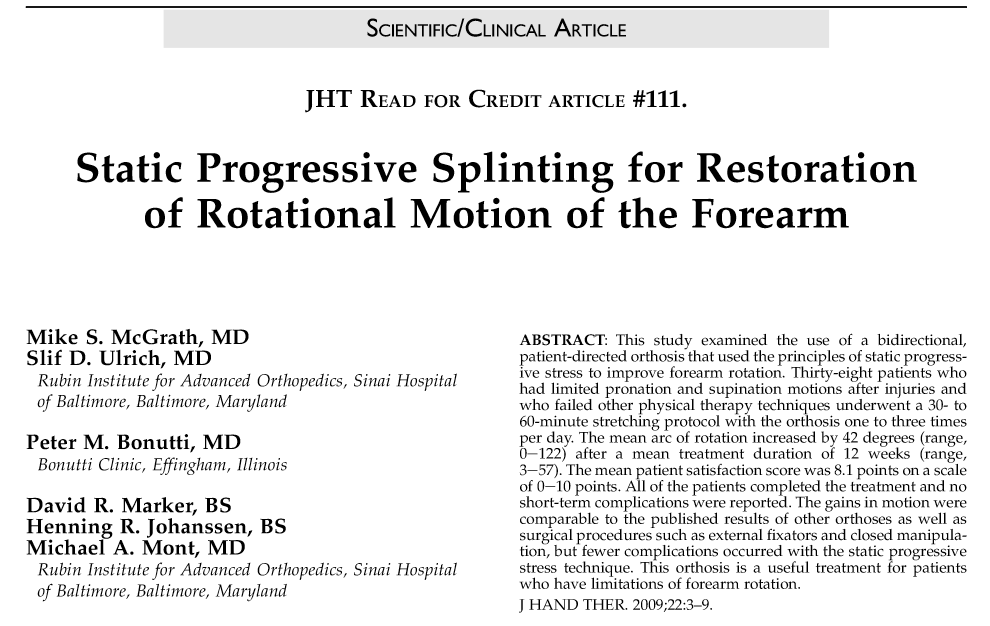
Parent-Weiss, N. M., & King, J. C. (2006). Static progressive forearm rotation contracture management orthosis design: a study of 28 patients. JPO: Journal of Prosthetics and Orthotics, 18(3), 63-67.
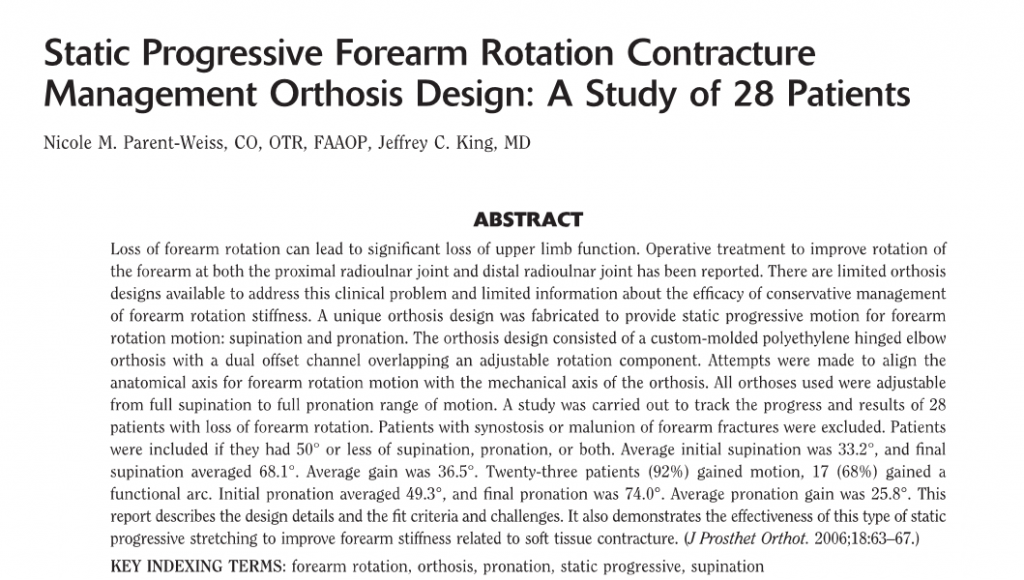
Shah, M. A., Lopez, J. K., Escalante, A. S., & Green, D. P. (2002). Dynamic splinting of forearm rotational contracture after distal radius fracture. The Journal of hand surgery, 27(3), 456-463.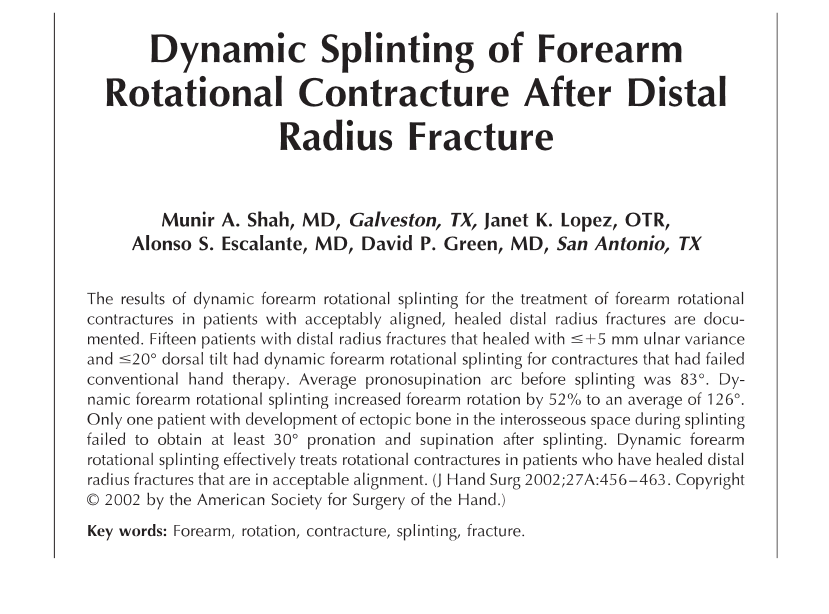
Please note: We are unable to supply the full text articles, but would encourage you to do a literature search of your own, as well as getting the above articles from your academic library.
Upper Limb Co is supportive of any research in this area.



